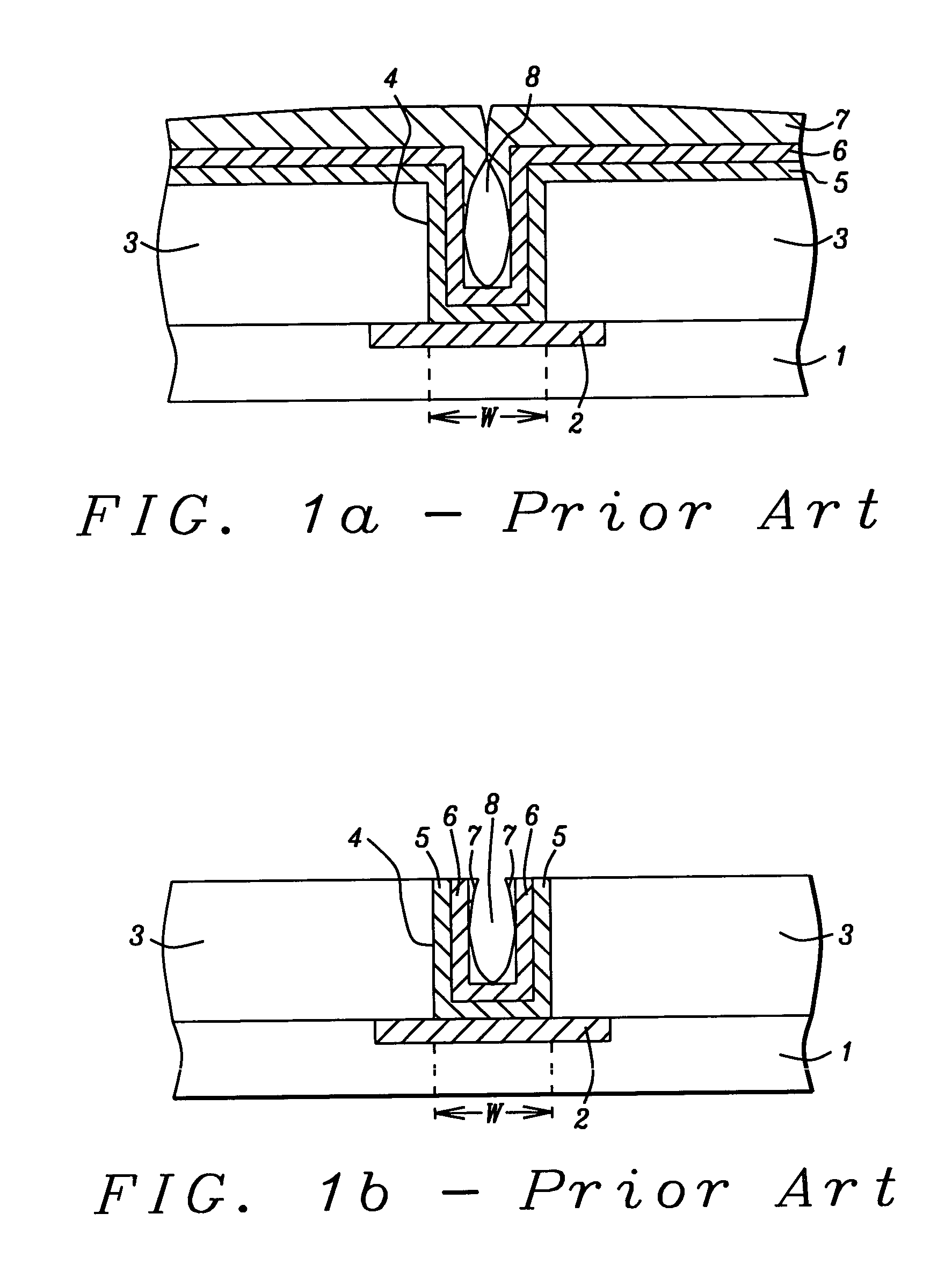Method of manufacturing a contact interconnection layer containing a metal and nitrogen by atomic layer deposition for deep sub-micron semiconductor technology
a technology of contact interconnection layer and semiconductor technology, applied in the direction of semiconductor/solid-state device details, semiconductor devices, electrical apparatus, etc., can solve the problems of increasing complexity and cost, shrinking interconnection size, and metal wiring, and achieves good step coverage and safe handling
- Summary
- Abstract
- Description
- Claims
- Application Information
AI Technical Summary
Benefits of technology
Problems solved by technology
Method used
Image
Examples
first embodiment
[0023]The present invention is an ALD method that is particularly useful for depositing a plurality of monolayers in an opening formed in a layer on a substrate where the opening is a small contact hole or via that has a width of about 100 nm or less. The plurality of monolayers form a composite layer with two or more elements comprised of at least one metal and nitrogen that is subsequently planarized to fabricate an interconnect or plug. However, the ALD method can also be used to fill other openings such as a trench. In a first embodiment, an ALD method is employed that produces a metal nitride plug with good step coverage, low impurity content, and which does not form any voids.
[0024]Referring to FIG. 2a, a substrate 10 is provided which is typically silicon but may be based on silicon-germanium, gallium arsenide, or silicon-on-insulator technology. The substrate 10 contains a conductive layer 11 that has an exposed upper surface which is coplanar with the top surface of the sub...
second embodiment
[0039]In a second embodiment, the ALD process deposits a composite layer comprised of a plurality of monolayers that include a metal, nitrogen, and a third element that is Si or B. The invention is especially useful for fabricating a composite layer that fills a contact hole or an opening which has a width of about 100 nm or less.
[0040]Referring to FIG. 5, the ALD process of the present invention is depicted in a flow diagram. In step 50, a substrate 10 having a dielectric layer 12 containing an opening 13 as represented in FIG. 4a is positioned on a chuck in an ALD process chamber (not shown) as described in the first embodiment. A vacuum is then applied to the ALD process chamber to remove oxygen and moisture and the temperature is raised to an acceptable level that is required for the ALD deposition. Preferably, the temperature is increased to a range from about 250° C. to 750° C. and the pressure is maintained at about 0.1 Torr to 50 Torr.
[0041]In step 51 which is represented by...
third embodiment
[0055]In another aspect, the composite layer of the third embodiment has the formula M1VM2WSXNZ where v, w, x, and z are fractions between 0 and 1 and which together equal 1, M1 is a first metal, M2 is a second metal, and S is Si or B. For example, the composite layer 40 in FIG. 4e may be further comprised of a fourth element that is a second metal. The composite layer 40 is a plurality of monolayers comprised of one or more monolayers of M1 SN and one or more monolayers of M2SN that are formed by the sequences of steps (51, 52, 53, 54, 55, 56) and (53, 54, 51, 52, 55, 56). During at least one of the cycles that include a step 51, a first metal (M1) gas precursor is flowed into the chamber and during at least one of the cycles that include a step 51, a second metal (M2) gas precursor is flowed into the chamber. For example, Ti{OCH(CH3)2}4 may be flowed into the chamber during one cycle to form a monolayer of TiSiN and TBTDET may be flowed into the chamber during a second cycle to fo...
PUM
| Property | Measurement | Unit |
|---|---|---|
| pressure | aaaaa | aaaaa |
| temperature | aaaaa | aaaaa |
| temperature | aaaaa | aaaaa |
Abstract
Description
Claims
Application Information
 Login to View More
Login to View More - R&D
- Intellectual Property
- Life Sciences
- Materials
- Tech Scout
- Unparalleled Data Quality
- Higher Quality Content
- 60% Fewer Hallucinations
Browse by: Latest US Patents, China's latest patents, Technical Efficacy Thesaurus, Application Domain, Technology Topic, Popular Technical Reports.
© 2025 PatSnap. All rights reserved.Legal|Privacy policy|Modern Slavery Act Transparency Statement|Sitemap|About US| Contact US: help@patsnap.com



